






 |
|||||||
 |
 |
 |
 |
 |
|||
 |
|||||||
|
Elekit TU8200 Single Ended 6L6 Amplifier Elekit is a Japanese kit company that has been around for a while now. They have all sorts of hobbyist kits; everything from robotics to a lie detector, but they happen to make some of the highest quality tube amplifier kits available anywhere. Kit building is a big deal in Japan, and is getting more and more popular in the West as well. For tube amplifier kits there are a few other choices around, Bottlehead and Transcendent come to mind, and back in the day the Welbourne amps. Elekit’s Japanese invasion established itself over the years with a very well regarded 300B amplifier kit, and of course the 6L6 amp featured here, as well as its predecessor, which I also owned and thoroughly enjoyed. This particular TU-8200 6L6 amplifier was “factory built” by Elekit’s North American distributor, Victor Kung. Victor did a great job, and the amplifier feels fairly robust and well made, but is not flashy or ostentatious in any way; it has a nice low-key look that is functional and with its small footprint it fits anywhere. With a built in volume control, two inputs, a headphone jack and even a built in DAC in my deluxe version, this is a stand-alone home audio solution that is super functional and easy to own and offers a sound quality that makes this amplifier an amazing bargain. The Elekit TU-8200 is a superb sounding amplifier! There are just no two ways about it this is a great sounding unit, and fidelity-wise I would have to say that it competes well with pretty much anything I’ve had in my room to date. Running the user’s choice of the 6L6 family, the Elekit TU-8200 makes about 8 watts per channel and gives a good rendition of each variant’s particular flavor. Readers of this site will know that I have a sweet spot for the 6L6 tube, and in the 6 months or so that I’ve owned the TU-8200 I’ve auditioned LOTS of tubes in this little gem…6L6GC, KT66, KT77, KT120, 6BG6, 807, 350B, EL34, 6L6G and even the ancient metal can 6L6. Of those, the 807 and the grey glass coke bottle 6L6G are my favorites. The supreme palpability imparted with the 807 is simply breathtaking, while the somewhat more laid back and organic sounding ST 6L6G is my surprising favorite in this amp. It just sounds very natural and “right”. The Elekit uses the 12AU7 tube as a driver, and as is often the case the affordable and easily available RCA clear top 12AU7 are my clear preference here. No other 12AU7 tube I’ve run so far has quite the sparkle and energy of the clear tops, price be damned. But if I had to make a criticism of this amp (and it's a stretch) it would be the driver tube; I wish the designer had chosen the 6922 family instead. The 6922 is a much better sounding tube than the 12AU7 in my opinion, and offers so many great choices of flavor. Of course there is likely a technical reason for the 12AU7’s placement here, but perhaps future versions might explore that possibility. I’d love to hear this one driven by a pair of CCa! One very cool feature of this amp is the user selectable output between Triode, Pentode and Ultralinear. In this generation of the amplifier the top plate must be removed to access the circuit board, where a simple jumper changes the output. I’ve found Triode to sound best for me, but all of the settings sound great. I see that on the newest version if this amplifier (the TU-8800), these controls are on top and much easier to switch between. At any rate, this is a great feature and empowers the user to tailor the sound to their tastes in a way that is usually not possible. In short, I can feel confident saying that no one who buys this amp and pairs it with appropriate speakers will be disappointed. When you factor in the ease of use and wide range of adjustments it's a no brainer. I plan to keep this one to send to college with my daughter when that time comes…if I don't just keep it for myself! Highly recommended if you can do the assembly or find one already put together. I just don't see how you can go wrong here. Bravo Elekit! Update Summer 2020: After owning this one for a year now, and using it rather infrequently, I spent a full weekend running this in my reference system. After months of super high-end single ended amplifiers like the Yamamoto 2A3 with mono plates, Will Vincent's Type 10 and Alan Eaton's 45, this little Elekit sure sounds great. Its easily 95% of those much higher pedigree platforms, and it is more flexible with 2 inputs and a volume control (plus headphone), not to mention the ability to change from Triode, to Ultralinear or Pentode. This little beauty is an uncompromising solution for superb quality sound at an affordable price. I could live happily ever after with this sound if I had to. I find I'm liking a pair of 1960's made in Holland EL-34 here. This one gets my very highest recommendation. Update Fall 2023: Where to begin with this sweet little amplifier? I’ve owned the Elekit 8200 for quite a long time now, and have a closet full of tubes that the amp will run. This little performer has the ability to compete toe to toe with anything, and runs such a huge variety of power tubes; most recently the magnificent EL37 and EL156. A few weeks ago I spent a rainy Sunday listening for a few hours to a pair of rusty old metal can 6L6; warm, lush and even handed in the 8200. All without a hiccup. One amp that runs all of the 6L6 is a powerful tool indeed. My highest recommendation, this little chameleon has been a keeper while so many others have moved on. |
||||||||

|
||||||||
|
Clean lines. Overall this is a simple and elegant looking amplifier. |
||||||||
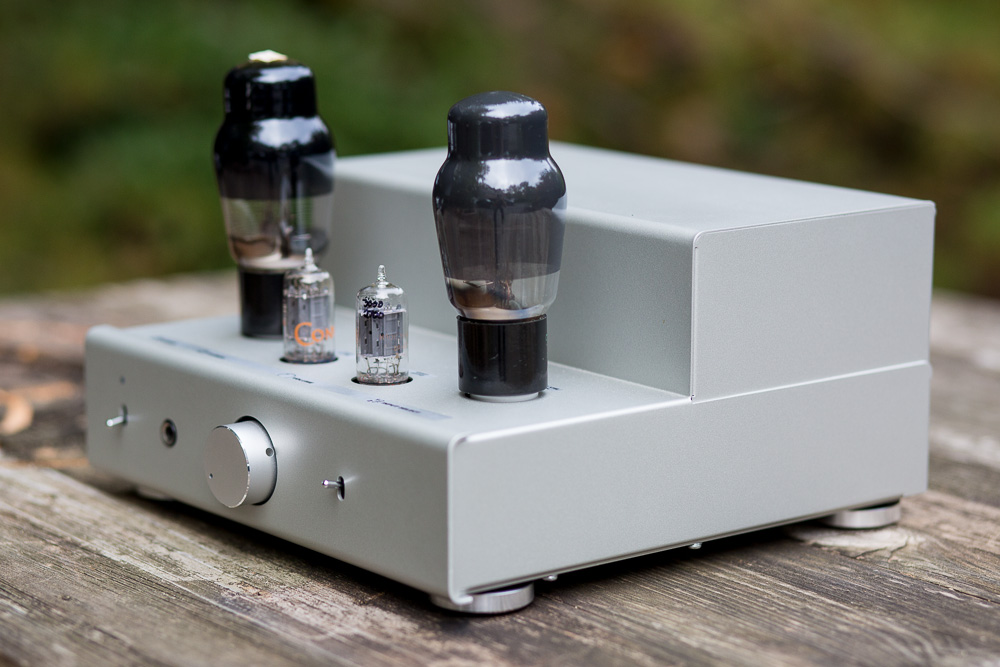
|
||||||||
|
The ST shaped 6L6 tubes turned out to be my favorite with the Elekit TU-8200. In this case a pair of grey glass National Union, probably from the 1940s. |
||||||||

|
||||||||

|
||||||||

|
||||||||

|
||||||||

|
||||||||
|
Simple controls; power on/off, headphone jack, smooth action volume control and input selection. |
||||||||
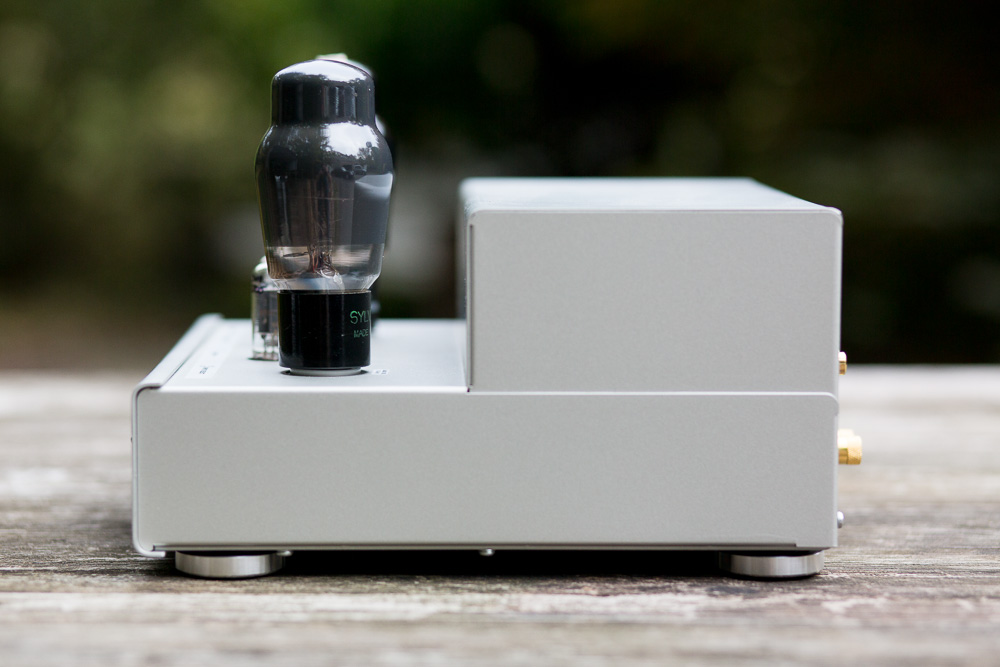
|
||||||||

|
||||||||

|
||||||||
|
I do wish the connectors were of higher quality. I’ve found that my interconnects are prone to falling off of the input jacks, and the speaker terminals are functional but very basic. Granted, this is sold as a kit, so the user/builder could probably make an upgrade if they wished to. Selectable impedance is a nice feature. |
||||||||

|
||||||||
|
The 807 is my second favorite sound with the Elekit TU-8200. With the 807 in place, this amp is a detail monster with an enormous soundstage. |
||||||||

|
||||||||
|
RCA clear top 12AU7, about $10 each in 2019 and worth every penny. These are from an old Conn organ. Organ tubes in general are a great bargain as they were made in huge numbers and were carefully screened by the organ companies before being accepted. |
||||||||
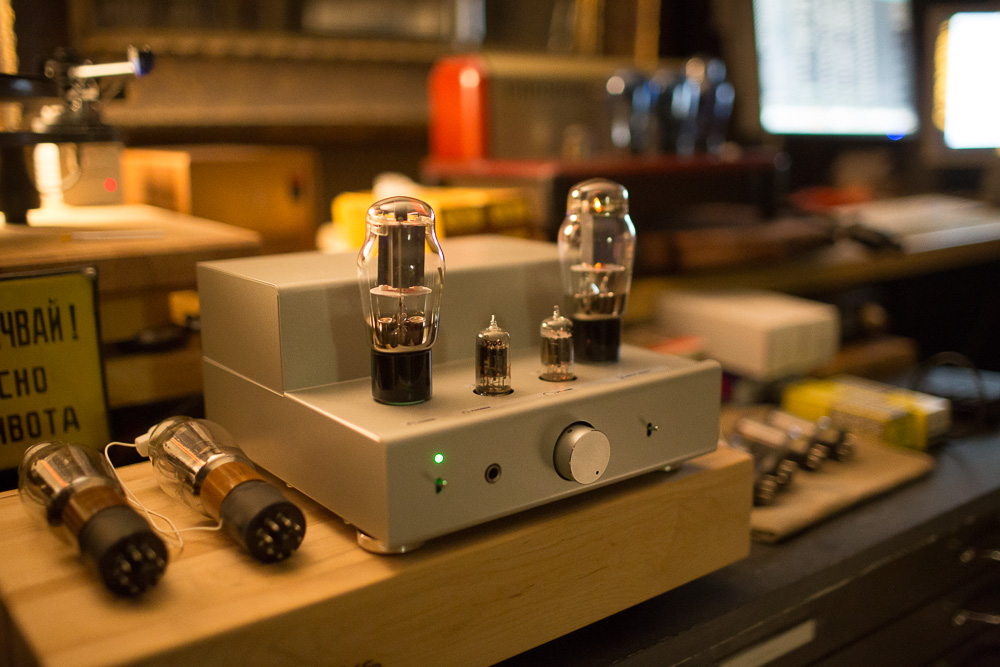
|
||||||||
|
Here with the Valve Art 350B. This amp ran the 350B with no issues, (but not so with a few other 6L6 amps including this one's little brother the TU-879). The 350B sounds great and is definately a unique tube. It would really be interesting to see an amp built around the optimal needs of the 350B! |
||||||||

|
||||||||
|
The 6AR6 is a fantastic tube, certainly one of the best of the 6L6 family. The TU-8200 runs this tube with zero issues, and after listening to these for a week straight I have to say this might be the best the amp has sounded. Delicate, airy and with a great big bark when the program material demands it. The 6AR6 puts many a triode to shame. |
||||||||

|
||||||||
|
This is the 5933, a ruggedized military version of the 807 made back in the 1950s by Sylvania and Tung Sol for high G and other rough applications encountered by military forces. Its a good sounding tube, but has a much fatter base than normal and that can present a problem fitting in some amplifiers with tight spaces. It uses the same 6L6 adapter as the 807. These are more expensive than the run of the mill 807, but I don’t think the extra price is warranted, as I cannot hear any improvement. My advice would be to stick with the regular 807. |
||||||||

|
||||||||
|
Here is the early metal version of the 6L6, the VT-115. These old metal cans are often overlooked by the audiophile community, but the fact is they can sound quite good, warm and detailed. Sure, they aren’t as cool looking, and there is some danger in not being able to see a red plating tube, and yes they can't take the voltages of a modern 6L6GC circuit. But, they are very reasonably priced for vintage American made 6L6. I’ve found them for as little as $2-$3 each, which is an incredible bargain for any tube, let alone a 1940’s RCA 6L6! The Elekit TU-8200 runs these without issue. |
||||||||

|
||||||||
|
These are the Russian 6n3c, a cheap but very good sounding 6L6 type tube. |
||||||||

|
||||||||
|
These are "Black Sable" 6L6, a premium Russian 6L6 made by SED in St. Petersburg. I think these are cryo treated, but am not sure. Tube Depot claims these to be the best sounding modern 6L6 tube, and that may be true. |
||||||||

|
||||||||
|
It’s hard to go wrong with the older Sylvania tubes in my experience. This pair was highly recommended and do not disappoint. And at less than half the price of the new “Black Sables” as pictured above. |
||||||||

|
||||||||
|
And here again running a pair of 1940's ST shaped 6L6G black glass tubes by National Union. |
||||||||

|
||||||||
|
Single ended EL-34 has been a tube I've only rarely managed to make sound “amazing” in my room, but in this amp it really works. Here as a Westinghouse labeled Made in Holland EL-34. Palpable detail and a richly layered, wide soundstage...and a real sense of ease. Superb! |
||||||||

|
||||||||
|
Here is one of the very the finest sounding 6L6 I have heard, 1960’s RCA blackplates. Wow! Everything is lit up with this tube in place, just amazing space and presence, and tone that is so realistic and honest. These are certainly some of the most expensive 6L6 tubes I have purchased but they are totally worth it. I love it! |
||||||||

|
||||||||
|
Here it is with KT88 tubes. These sound good, but not on the same level as the RCA 6L6 pictured above. I’ve owned this amp for a few years now, and have dressed it up a bit with an old ham radio dial. |
||||||||

|
||||||||
|
The Telefunken EL156 is quite a magnificent sounding tube! Even running at what is probably only 70% of its capacity in the Elekit, this tube sounds very 3-dimensional and alive. What a treat! This little amp never ceases to be fun and new. |
||||||||
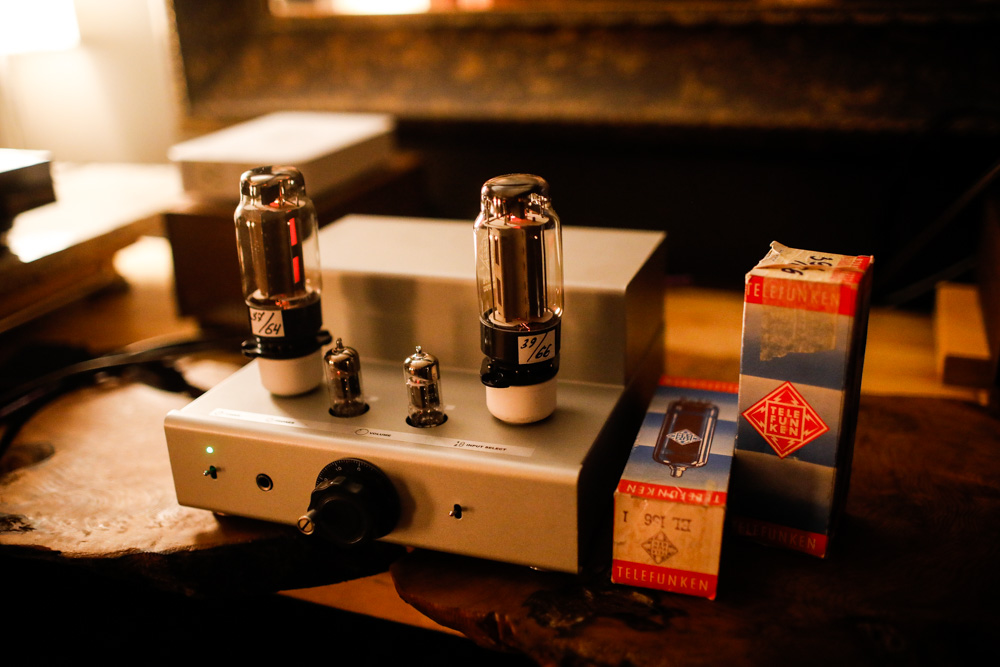
|
||||||||

|
||||||||

|
||||||||
|
Mullard EL37 have a very lit up and 3 dimensional sound, but are also warm and lush. Extremely triode-like in sound, these are magical. |
||||||||

|
||||||||

|
||||||||

|
||||||||
|
Visseaux 6L6G. These are very nice sounding, early 6L6 tubes from France. Warm and rich and with a wide and expansive sound stage, the Visseaux is one of the best 6L6 I’ve heard. Being an early G tube, this is likely running a bit over specifications in this amplifier. |
||||||||

|
||||||||
|
I generally favor RCA cleartop 12AU7 in this amp, but the 50’s smoked glass TungSol are certainly nice too! |
||||||||

|
||||||||
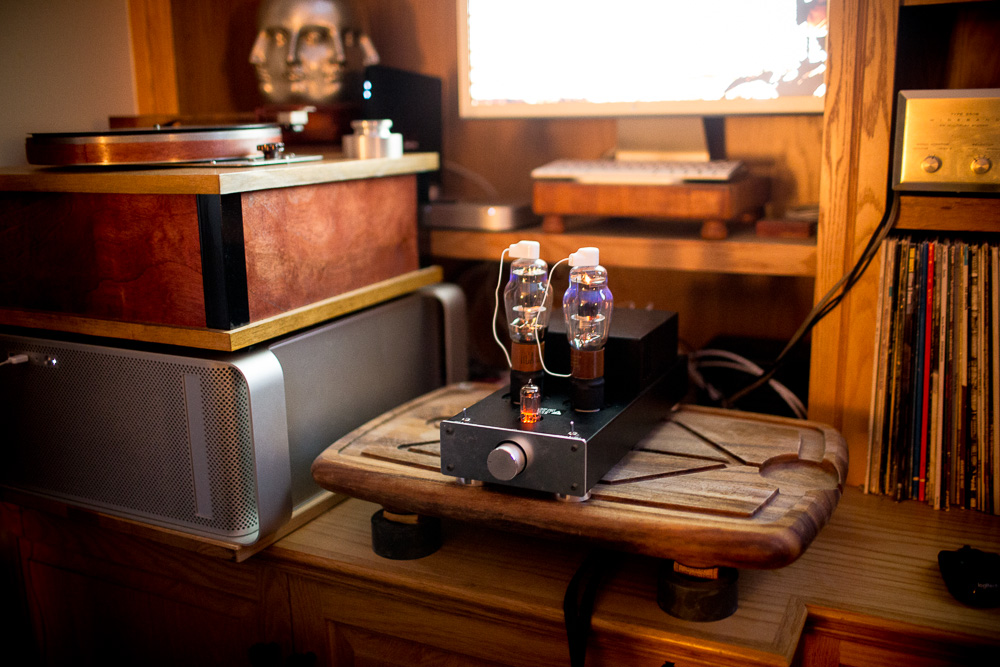
|
||||||||
|
Here is the TU-8200’s predecessor, the TU-879s. Pictured here running 807 tubes in my living room system. Also a great sounding amp, I owned this one before the TU-8200 and am just too lazy to make a page for it. Suffice to say that the sound is quite similar, but the TU-8200 is a little better across the board, not to mention looks. |
||||||||

|
||||||||
|
The 807 was definitely the killer tube for me in the 879s, and if you find one I’d recommend going that route. They have a wonderful purple glow in this amp too! One downside of the 879s is the input tube; while its nice to have only one as that makes tube rolling economical, the choice of the 12AX7 is one of my least favorite. Of the several 12AX7 I used here I liked my 1960’s NEC 12AD7 the best. |
||||||||

|
||||||||
|
Kind of a wild rear panel setup. This definitely improved in the TU-8200! |
 |
|||||||
 |
 |
 |
 |
 |
|||
 |
|||||||
 |
|||||||